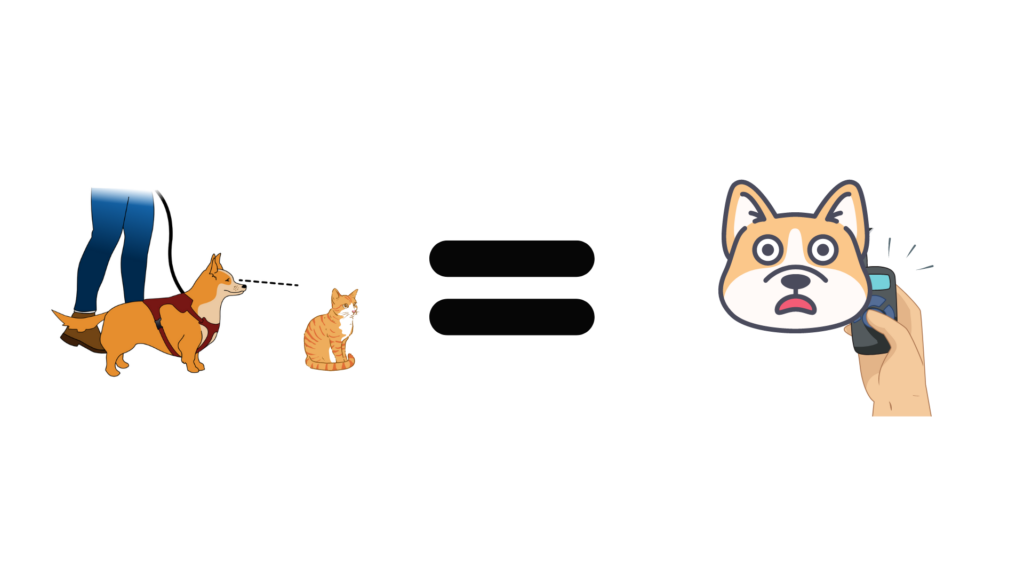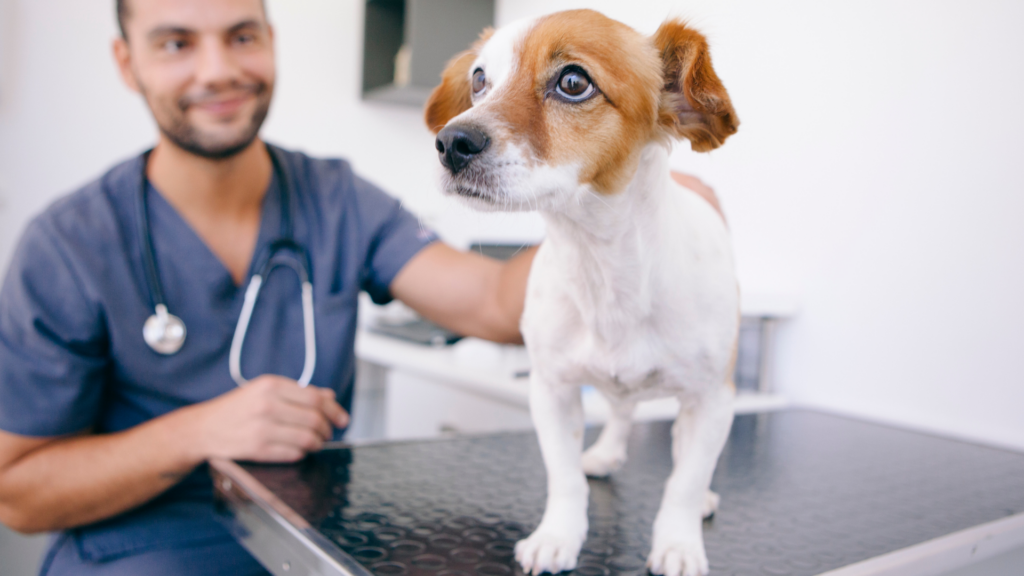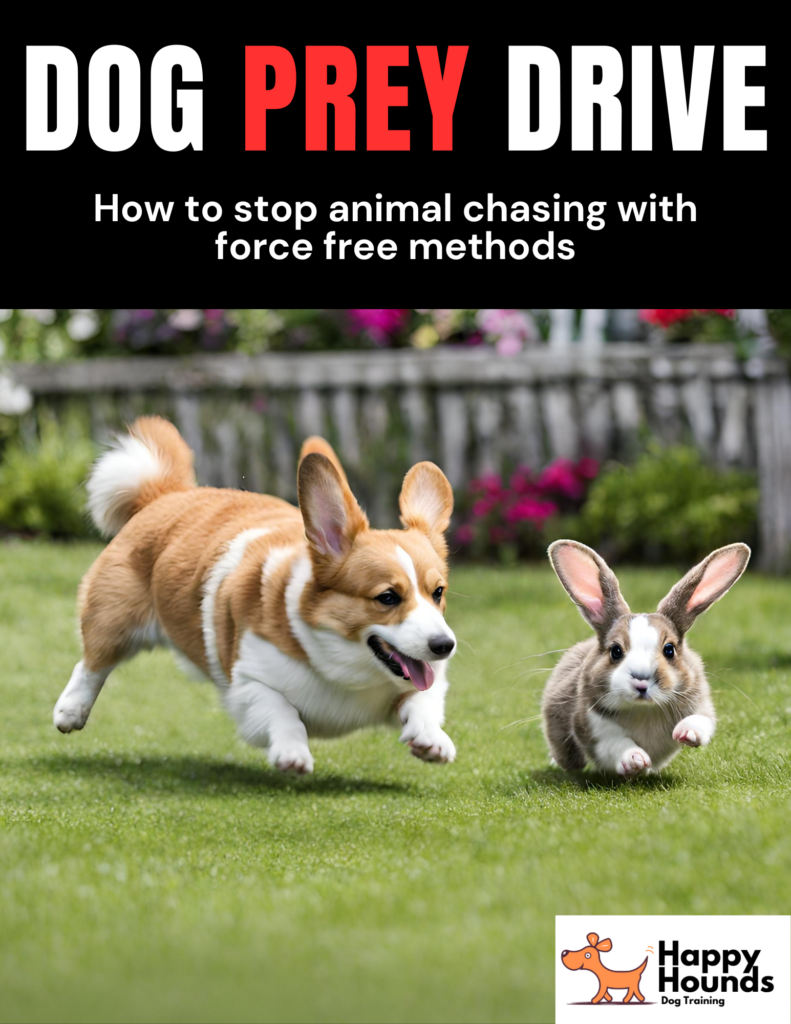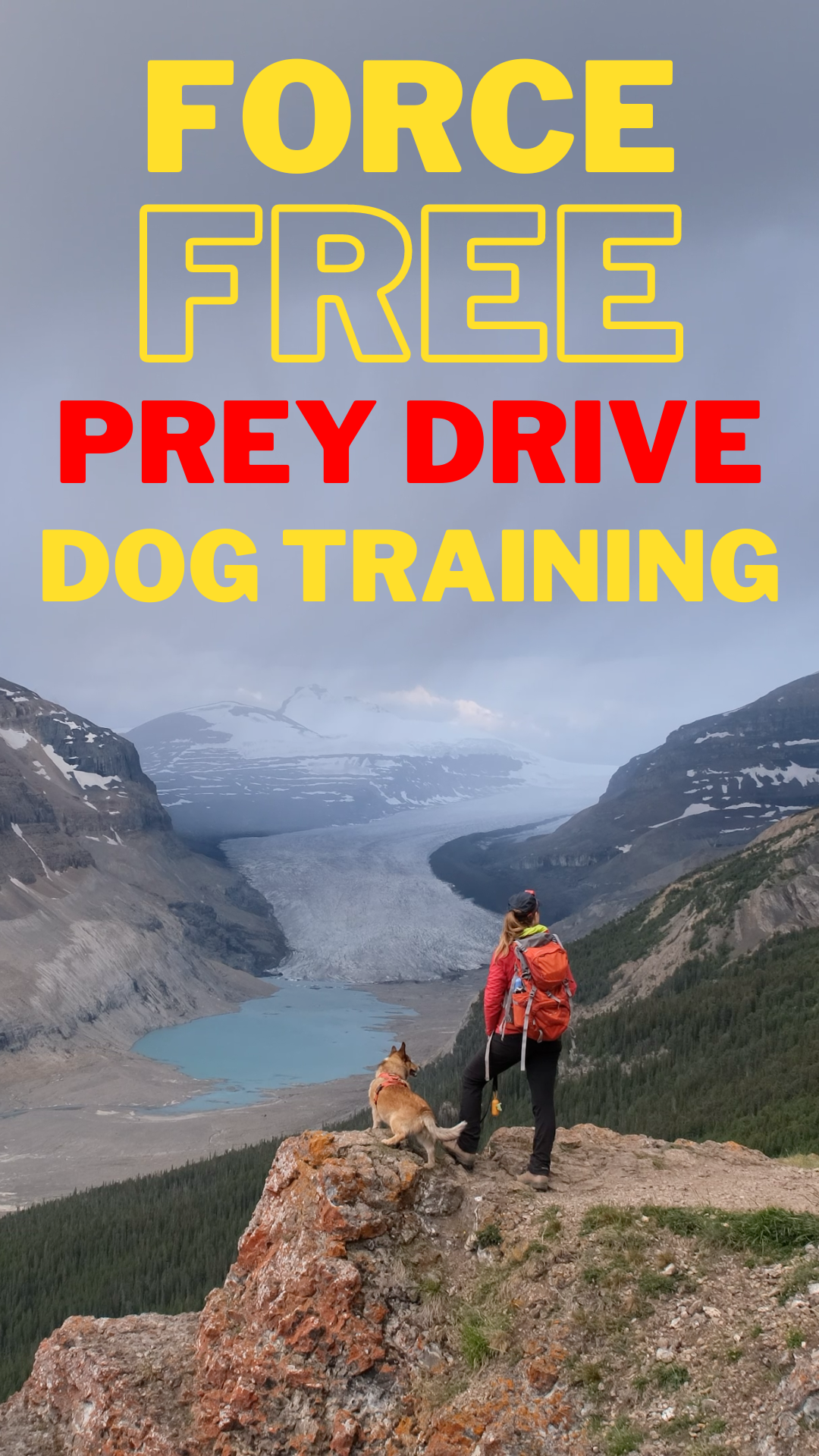There are a lot of misconceptions about dog prey drive and how to “fix” it. In this 4 part blog series I’m going to cover:
- What is dog prey drive?
- How does dog breed affect their prey drive?
- Why I train dog prey drive force free
- Dog prey drive training: how to stop animal chasing
I also created a comprehensive Youtube video that explains EVERYTHING you need to know about dog prey drive. It also includes a step-by-step training plan to teach your dog to stop chasing animals. You can watch that here:
Even though my dog Neirah had an intense drive to chase & kill animals, I decided to train her prey drive without corrections.
Why?
And: is it even possible to train a dog to stop chasing animals without using corrections such as leash pops, shock collars, or other forms of punishment?
Yes!
In very simple terms, we have two options in dog training:
- Reward/reinforce (for example: treats, praise or play) the behaviours we like so that they happen more frequently.
- Punish (for example: leash corrections, shock collars, or a spray bottle) the behaviours we dislike so that they happen less frequently.
You actually don’t need to use corrections to train a dog!
There are two reasons I specifically avoid corrections during prey drive training:
1) Dogs very quickly build associations, sometimes even ones we didn’t intend to cause.
If you use scary or painful corrections during prey drive training, there can be fallout (unintended negative consequences) from that.
Perhaps you’ve punished the chasing behaviour enough to diminish it, but at what cost? Unbeknownst to you, your dog may associate that pain with the animal they spotted.
Think of it like this:

Your dog spots a cat. As they start to chase it, you shock them with an e-collar as a correction.
Your dog may not understand that the shock was for chasing. Instead, they may build an association that cats = pain.
Rather than knowing they shouldn’t chase the cat, this can backfire & lead to increased aggression towards the animals they have previously chased on instinct.
This will make your problems WORSE!
The dog could also potentially associate that pain or fear with the situation where it’s previously occurred. For example, think of how nervous your dog has been after a painful trip to the vet.

With my dog Neirah, I knew the main time her prey drive would be triggered would be out on hikes since that’s when we were most likely to encounter an animal.
I didn’t want to risk doing anything that might make her nervous to join me on fun adventures!

2) With strong prey drive, the punishment level needs to be equally intense in order to be effective.
Light corrections like saying “no” or tapping the dog on the shoulder aren’t going to be adequate punishment for a dog that has a strong desire to chase.
In order for corrections to work, the punishment level needs to match the drive.
I have zero interest in inflicting enough levels of pain or discomfort on a dog that would be required to make punishment-based training effective for prey drive… Especially when corrections are not required for results!
So, how do you train dog prey drive force free?
In the next blog post in this series, we’ll discuss HOW to train a dog to stop chasing animals without any corrections!
I also created a low-cost guide that explains everything you need to know to understand & train your dogs prey drive. If interested, click here!

Happy training, see you in the next post!
Disclosure: Happy Hounds uses affiliate links. Purchasing with these links will not cost you any extra, but I get commissions for purchases made through these links. Affiliate links help me to continue to offer free resources & blog posts. I would love if you used them!


+ show Comments
- Hide Comments
add a comment